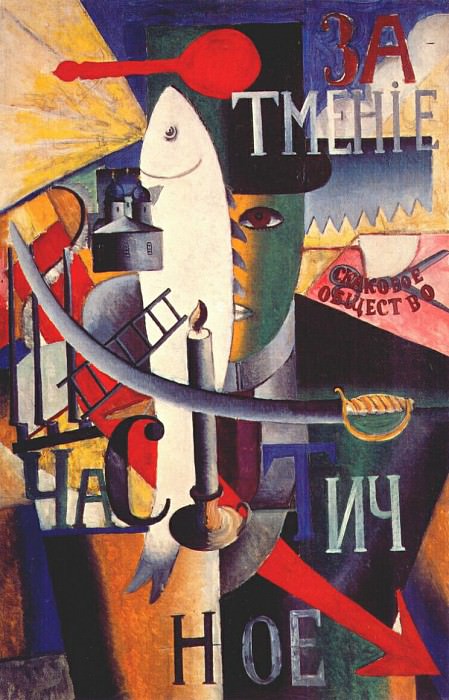malevich an englishman in moscow 1914 Kazimir Malevich (1879-1935)
Kazimir Malevich – malevich an englishman in moscow 1914
Edit attribution
Download full size: 744×1160 px (0,2 Mb)
Painter: Kazimir Malevich
Understanding the avant-gardists can sometimes be even more difficult than the surrealists, and there are a great many interpretations of their work, and you can never tell who is right in it. What did the artist want to say? Was he relying on biblical texts? Was he laughing at something, or was he, on the contrary, deeply serious in creating his picture? Unanswered questions that there is no one else to ask. "An Englishman in Moscow" is set in 1914, on the threshold of every conceivable revolution and war that has shaken Russia and turned it inside out.
Description of Kazimir Malevich’s painting An Englishman in Moscow
Understanding the avant-gardists can sometimes be even more difficult than the surrealists, and there are a great many interpretations of their work, and you can never tell who is right in it. What did the artist want to say? Was he relying on biblical texts? Was he laughing at something, or was he, on the contrary, deeply serious in creating his picture?
Unanswered questions that there is no one else to ask.
"An Englishman in Moscow" is set in 1914, on the threshold of every conceivable revolution and war that has shaken Russia and turned it inside out. It rises vertically; the center of its composition, its fulcrum, is the cross. The fish and the saber, the saber and the candle are overgrown. The crosses form the letters "t", the cross can be seen when looking at the human figure which seems to serve as a background for ordinary, seemingly without any logic.
Equally important are light and darkness, struggling for supremacy in the painting. The face of the Englishman is immersed in darkness. Pure rays of light pour out from behind the head of the fish.
The objects in the painting seem to be picked up without any point - a candle. A shining white fish. A saber. A wooden spoon - the futurists wore such spoons in their buttonholes when they went out for an evening promenade, with the intention of shocking foreigners. A ladder. An inkwell. Scarlet arrow. A shop or store sign.
You can look for deep symbolism in them, you can look more simply - everything is mixed up in the picture, like in the head of a person who first arrived in a big city. A Cossack with a saber walks by, and lo and behold, the image of the saber is already swirling in his head, not wanting to give up. The smell of fish, appetizing, enticing from the window of a store - and lo and behold, a white fish emerges. Someone on a high staircase paints a wall or updates a sign - and the staircase stays inside, too.
Moscow piles up, a wooden spoon in the buttonhole of an oncoming passerby draws the eye. Strange signage is memorable. I feel dizzy.
However, it could be that the candle symbolizes the inner burning, without which there is no reason to live.
Кому понравилось
Пожалуйста, подождите
На эту операцию может потребоваться несколько секунд.
Информация появится в новом окне,
если открытие новых окон не запрещено в настройках вашего браузера.
You need to login
Для работы с коллекциями – пожалуйста, войдите в аккаунт (open in new window).




















You cannot comment Why?
Perhaps it’s a painting of a man with a fish on his head and a sign that says,’i can’t eat all of the fish ’.